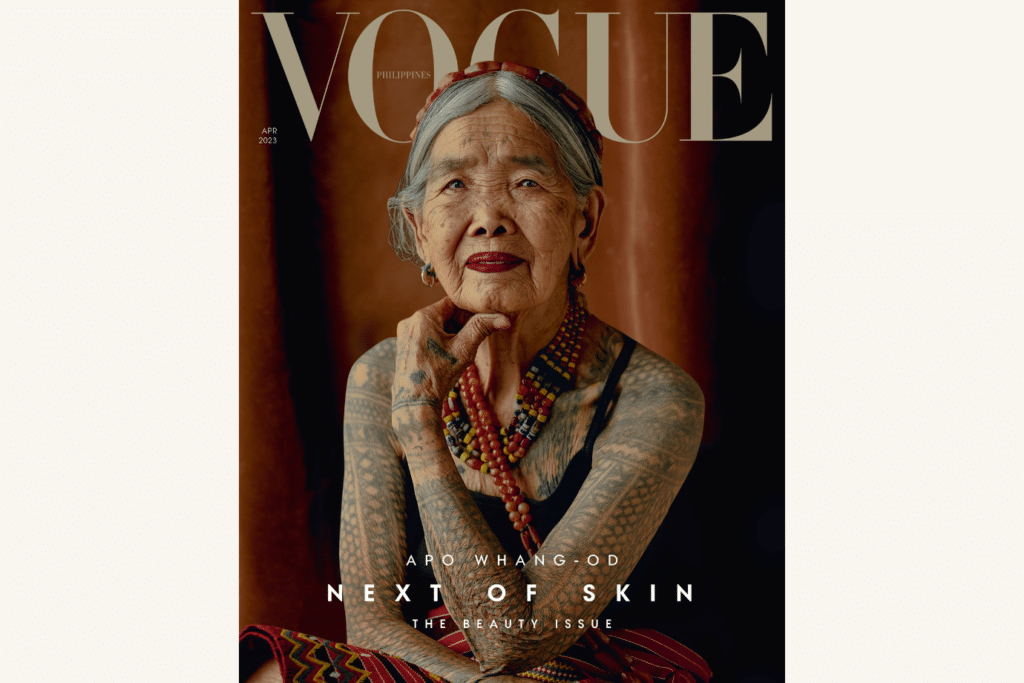Apo Whang-Od, a 106-year-old tattoo artist, has graced the cover of Vogue Philippine’s latest issue, and her story has sparked conversations and appreciation for the beauty of ageing.
Whang-Od, also known as Maria Oggay, has become the oldest person to ever appear on the cover of Vogue, and is heralded as the last mambabatok– a traditional Kalinga tattooist– of her generation.
The first and only mambabatok, she’s been building her career as a tattooist since the age of 16 when she first learned the ancient method under her father’s mentorship.
“I’ll only stop when I can no longer see, so I can continue to give people the mark of Buscalan,” Whang-Od told Vogue about her craft.
Buscalan is a remote village in the Kalinga province where Whang-Od has been keeping the thousand-year-old practice of batok alive– a traditional tapping method using charcoal soot and a sharp stick.
For decades, she’s travelled to far and neighbouring villages to imprint the sacred symbols of their ancestors onto the skin of individuals who have crossed or are about to cross a threshold in their lives, according to Vogue.
The magazine’s interview of Whang-Od points out that, for men, this means being tattooed as a “headhunting warrior”, whereas women have traditionally been tattooed for “fertility and beautification”.
“The tattooed elder women of Kalinga often say that when they die, they can’t take their beads and gold with them to the afterlife. They only have the markings on their body,” writes Audrey Carpio, Vogue’s features editor, noting that Whang-Od has tattooed more women than warriors as headhunting was banned in the early 1900s by the Americans.
Nowadays, Whang-Od’s work is widely renowned and has driven waves of tattoo tourism to the Philippines from people around the world. She’s inspiring a new generation of batok artists.
While mambabatok can only pass on their craft within their bloodlines, and Whang-Od never had children of her own, she’s been passing down her knowledge to her grandnieces, Elyang Wigan and Grace Palicas.
Along with her esteemed craft, Whang-Od’s striking image on Vogue’s cover has stunned many. The magazine said the photo is meant to highlight the female gaze, and Vogue Philippines editor-in-chief Bea Valdes told CNN Style the decision to feature Whang-Od was unanimous among the publication’s staff.
“We felt she represented our ideals of what is beautiful about our Filipino culture,” said Valdes.
“We believe that the concept of beauty needs to evolve, and include diverse and inclusive faces and forms. What we hope to speak about is the beauty of humanity.”


